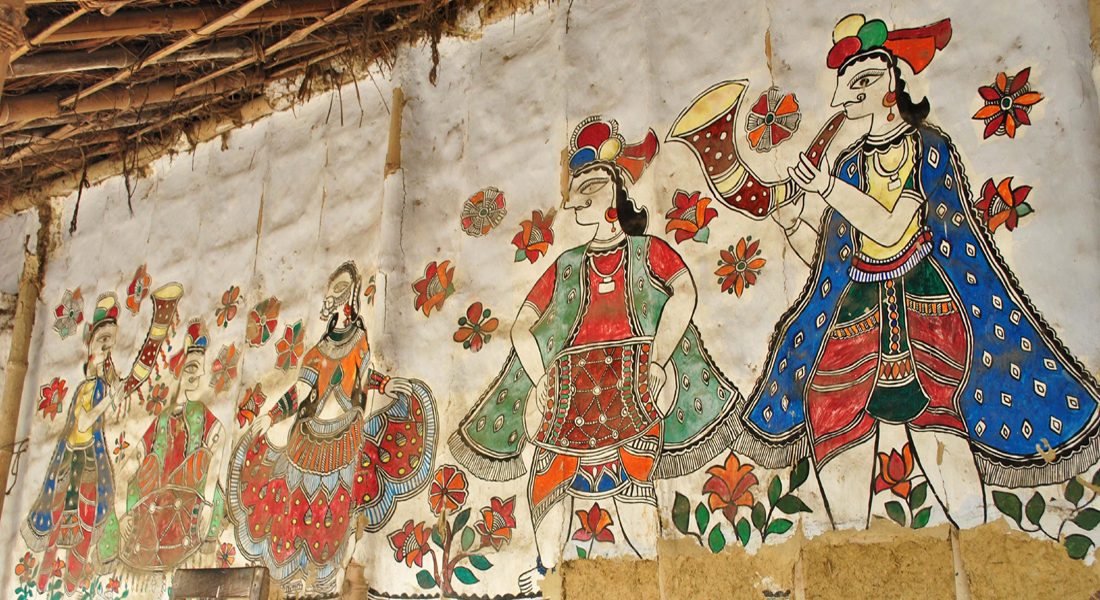Madhubani painting, also called Mithila Painting, is a traditional folk art of Bihar which has succeeded in creating a place globally. Madhubani painting has been done traditionally by the women of villages around the present town of Madhubani and other areas of the Mithila region of Bihar. The painting was traditionally done on freshly plastered mud wall of huts, but now it is also done on cloth, hand-made paper, and canvas. The colors used are derived from plants.
Generally, no space is left empty; the gaps are filled by paintings of flowers, animals, birds, and even geometric designs.
Madhubani painting is a traditional Indian art form mostly done by women and the depiction of nature and Hindu religious motifs are dominant. The themes generally revolve around Hindu deities like Krishna, Ram, Shiva, Durga, Lakshmi, and Saraswati. Natural objects like the sun, the moon, and religious plants like tulsi are also widely painted, along with scenes from the royal court and social events like weddings.
These paintings were usually made on the eve of important dates, to mark the ceremonies to be performed, like a wedding, festivals, religious events, etc. Traditionally, rice ground into a paste was used to create these works of art.
Today, not only women but also men are learning the Madhubani art of painting.
Source: UMSAS, Patna, Information partially edited

